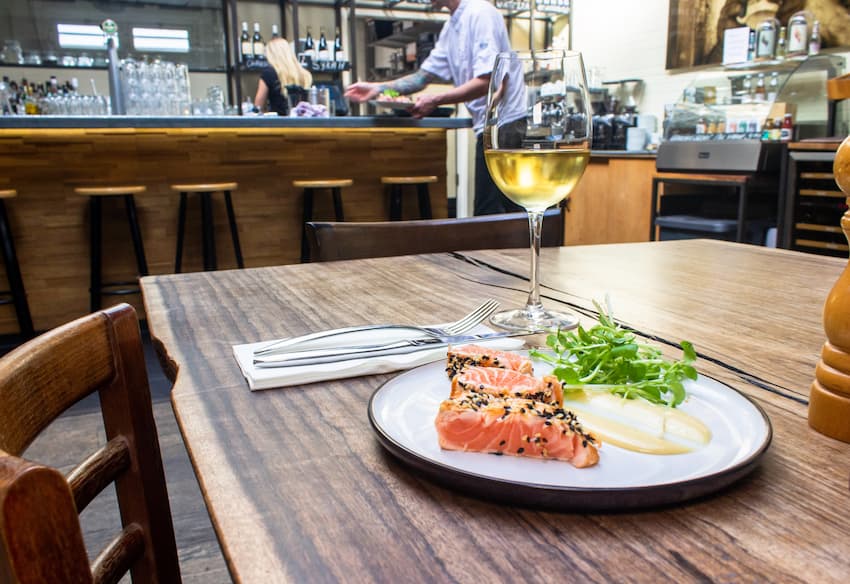Ever wondered what the type of finish is listed on the furniture’s details or wondering how to finish a restored piece of wood furniture?. Here is a handy guide to the various types of wood furniture finishes that are out there.
What is a ‘Finish’?
A finish, at a very basic level, is nothing more than applying a layer of protection or refinement to the surface of wood furniture. Technically speaking, simply sanding a surface smooth is form of a finish. But most finishes use sanding as just the first step. A finish is also the coating used to give wood furniture a shine or a unique look. This coating can act as protection, or as an aesthetic, or both.

Different Types of Finishes
Most finishes fall under one of three broad categories.
- Evaporative
- Reactive
- Coalescing
These three categories describe the chemical principles of the finish, as in how the combination of solvents react when combined. They are not the terms that many layman are familiar with. Sometimes these are broken down into two categories, "surface finishing," and "penetrating finishing". Among these categories, there are many, many types of finishes. These would be the finishes that most people know by name.
Each type of finish itself has subcategories as well. For the uninitiated, it can get a little confusing. Most refinishers specialise in a handful of types. No one really does them all. Here are the main types of finishes that make the rounds the most.
Penetrating Finishes
A penetrating finish is any finish that sinks into the wood. This provides sealing properties as the finish fills in between the fibres of the wood. In essence, they become a part of the wood, which strengthens it. They can also dye the wood or bring out the grain patterns in sharp relief. Many people like these types of finishes for antiques or things that will not see a lot of wear or movement.
There are two main kinds of penetrating finishes.
- Penetrating oil finishes
- Penetrating resin finishes
Oil finishes do not penetrate as deeply into the wood. Instead, it gives the wood a soft shine and lustre. Rubbing oil into the wood is one of the oldest ways of finishing furniture. But there is more to a penetrating oil finish than just applying oil. Depending on the type of oil used, other measures are applied after it dries to give a specific effect.
Resin finishes are much like oil finishes but with the inclusion of resin. These resins deeply penetrate the wood and harden. The resin provides a good deal of protection to the wood while the oil works to shine it. There are many different types of resins, and even more resin and oil combinations.
Surface Finishes
A surface finish, as the name states, deals with sealing and smoothing the surface of wood furniture. It is these finishes that give wood furniture a glassy, mirror-like look. There is a wide variety of surface finishes. Most surface finishing solvents make use of resins and drying oils. Each type of finish has pros and cons. Each finish represents a category all its own.
- Varnish finishes – These are the most common types of surface finishes. They add warmth through the use of resins. They add the kind of shine that many people associate with well-maintained pianos. It also adds a tremendous amount of strength and durability.
- Shellac – Shellac does add toughness, and it dries quickly. Unfortunately, shellac is not resistant to water and alcohol. This makes it inappropriate for a lot of furniture finishes. However, it can still work as a sealer. But other types of finishes already have sealing properties.
- Lacquer – Lacquers come in two types, the kind you spray on and the kind you brush on. It creates a hard and durable finish, but isn’t appropriate for all types of wood. It is also one of the hardest finishes for beginners to get right.
- Wax – A wax finish works best when used in conjunction with another finish. By itself, it can protect against the occasional scuff. But when used with another finish, it can actually make the underlying finish shine more.
- Water based finishes – Water based solutions are actually modifications of other finishing solvents. It’s just that some of the harsher chemicals are replaced with water. In turn, synthetic resins are used that can mix well with the water. The most common water-based finish comes is water-based polyurethane mixes.
This isn’t even an exhaustive list of the types of surface finishes available. It is important to keep that in mind when looking for a truly unique look for wood furniture. The caveat to that is that getting the most out of a finish of any type requires a skilled refinisher.
Methods of Applying Finishes
Even within the many types of finishes, there are also different methods involved in achieving that finish. Most finishes do not consist of just one finishing type. And even if it did, there are multitudes of ways to apply that one type of finish.
Refinishers often mix and match techniques. They also mix and match formulas. Refinishing involves technique, skill, and an understanding of the properties of the finishes used. Not all finishes work with all woods. Not all finishing types are applicable for all situations. These are the reasons why those who would add finishes to their wood garden furniture need to delve deeper into this subject, or discuss it with a professional.
Related Articles
- How to Protect, Store and Maintain Wooden Garden Furniture
- Removing Scratches from Commercial Tables
- Stop Spraying Sanitiser on Wooden Restaurant Tables
- Maintenance Tips for Outdoor Teak Furniture
- Maintaining your Commercial Outdoor Furniture